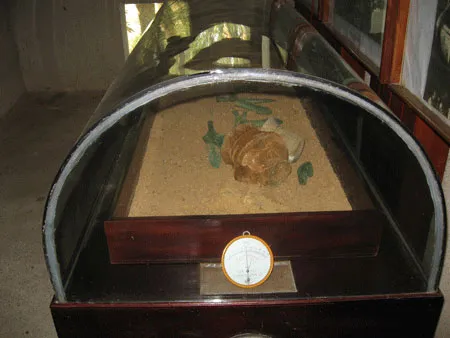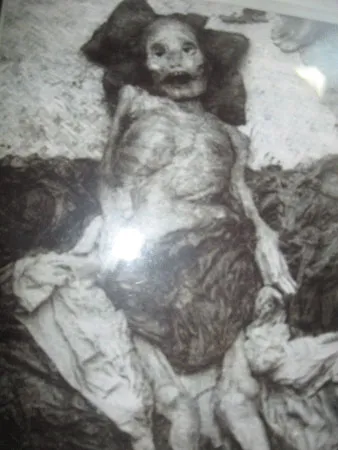In recent years, the discovery and study of ancient tombs in Vietnam have become increasingly common, attracting significant interest from archaeologists and the public alike. These relics are not only valuable archaeologically but also provide precious resources, helping us understand more deeply the history, culture, and lives of ancient Vietnamese people. Uncovering the mysteries hidden beneath the earth is a fascinating journey, connecting the past with the present and opening up unexpected new chapters of history.
Uncovering Secrets from Ancient Remains
The discovery of relatively intact human remains, dating back thousands of years, is a significant contribution to Vietnamese archaeology. By studying these remains, including skulls, scientists can determine ethnic origins, a crucial aspect in reconstructing the historical picture.

A prime example is the Viet Khe tomb (Hai Phong), currently on display at the Vietnam National Museum of History. This tomb is made from a hollowed-out tree trunk, significantly larger than other ancient tombs like Chau Can. Notably, over 100 artifacts were found in the Viet Khe tomb, including bronze tools, weapons, musical instruments, ceramics, and lacquered leather items. The richness of these relics has greatly contributed to the treasury of bronze culture in Vietnam, providing researchers with more data for in-depth studies of the historical period around 2500 years ago.
Furthermore, the discovery of fabric in ancient tombs has opened up a new direction of research into the weaving techniques and fabric materials of the ancients. Dr. Nguyen Viet at the Southeast Asian Prehistory Center has successfully studied Dong Son coarse fabric and determined that the woven fiber material is from a type of jute plant.
Mysteries of Ancient Mummies
Although the concept of “mummification” in the modern scientific sense (using preservatives to preserve bodies) is not recorded in Vietnamese history, in reality, many ancient tombs, when excavated, revealed remarkably intact human remains. This has sparked debate and curiosity about the ancient techniques of body preservation.
Most mummy tombs were discovered accidentally by locals during farming or constructing irrigation works. The first tomb with a preserved mummy was found in Dan Luc commune, Nong Cong (Thanh Hoa) in 1958, identified as the tomb of a concubine from the Trinh family.
Subsequently, many other mummy tombs were also discovered in Hoang Duc (Thanh Hoa), Van Cat (Nam Ha) of Mrs. Pham Thi Nguyen Chan, Vu Ban of Mrs. Tran Quy Thi, and the tomb of Ung Quan Cong’s wife, Mrs. Bui Thi Khang. From the 1950s to the 1970s, archaeologists also excavated the tomb of Dinh Van Ta and his two wives in Ham Giang, Cam Giang (old Hai Hung), the tomb of a young woman around 20 years old in Thuy Anh, Thai Binh, and the tomb of a eunuch (?) in Thanh Liem, Nam Ha.

In addition, nearly 30 other compound tombs have been discovered but not yet excavated, such as the tomb of Trinh Quan Cong Hoang Cong Ky in Quynh Coi, Thai Binh, the tomb of King Le Uy Muc (Ha Bac), and the tomb of General Vu Duy Chuc and his wife in Nam Truc, Nam Ha. These mummy tombs all date back to the Le-Nguyen dynasties.
Being tombs of kings and mandarins, rumors of buried gold, silver, and jewels led many locals to attempt looting. Some tombs were also destroyed by American bombs during the war. This resulted in some tombs being excavated in damaged condition, with deteriorated remains and tattered burial artifacts. However, in the remaining excavated tombs, the bodies were still intact, with skin even remaining soft and joints easily flexible.
Notably, the tomb of King Le Du Tong in Bai Trach, Tho Xuan (Thanh Hoa) was a significant discovery. In 1958, a local farmer digging in his garden struck the outer coffin, breaking it and revealing a lacquered inner coffin. When the farmer used a crowbar to pierce the coffin, a fragrant odor emanated.
Like many other mummy tombs, King Le Du Tong’s tomb is a compound tomb, consisting of an inner and outer coffin. The outer coffin is made of a very strong compound, including sand, lime burned from oyster shells, molasses, and water infused with niet do plant. The inner coffin is made of ngoc am wood (drooping hoang dan), a rare and precious wood.
Inside King Le Du Tong’s coffin was a gold-embroidered royal robe, along with many other burial artifacts such as paper fans, calligraphy brushes, silk-covered books, betel and areca nut pouches, and a round wooden box containing soft wax. These artifacts provide valuable information about the Le dynasty’s royal court and are currently preserved at the Vietnam National Museum of History. In King Le Du Tong’s coffin, as well as other mummy coffins, there was a quantity of fragrant oil, identified as pine oil mixed with eucalyptus oil or bach dan oil. Below the that tinh board was a layer of roasted rice and dried tea buds or cotton.
Ancient Embalming Techniques & Modern Preservation
The preservation of intact bodies for hundreds of years in ancient Vietnamese tombs is a remarkable phenomenon. Scientists have proposed various hypotheses to explain this.
One hypothesis suggests that the ancients may have intended to keep the bodies in their homes for a period of worship and rituals. Therefore, the coffins had to be made very airtight, with a thick layer of roasted rice or dried tea under the that tinh board to absorb moisture from the corpse. In addition, the use of fragrant wood and aromatic oils for the coffins also helped to reduce the odor from the body.
These practices of the ancients inadvertently created an ideal environment for body preservation. When the coffin was placed inside a sturdy, airtight outer coffin, the amount of oxygen needed for bacterial life was insufficient, preventing their activity. Furthermore, pine oil and eucalyptus oil have antibacterial properties, helping to prevent body decomposition.
Today, with the advancement of science and technology, the technology of embalming and preserving bodies has reached a high level. The body of President Ho Chi Minh is a testament to this.
Preserving and maintaining the bodies in mummy tombs is an extremely difficult task. After excavation, the mummies are transported to Hanoi for research and preservation at the Vietnam National Museum of History. The bodies are placed in climate-controlled rooms with stable temperature and humidity, meeting technical preservation requirements. Annually, the museum has a schedule of regular inspection and maintenance, using chemicals to sterilize, disinfect, and eliminate mold.
Continuing the Journey of Discovery
The mysterious ancient tombs in Vietnam are not only historical relics but also invaluable cultural treasures. Researching and preserving these relics is our responsibility to future generations. The journey to uncover the secrets hidden beneath the earth continues, promising new discoveries that will deepen our understanding of Vietnamese history and culture.